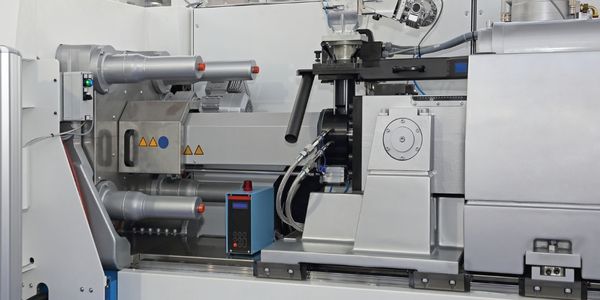技术
- 基础设施即服务 (IaaS) - 云数据库
- 网络与连接 - 以太网
适用行业
- 水泥
- 塑料
适用功能
- 维护
- 产品研发
用例
- 施工管理
- 时间敏感网络
服务
- 系统集成
关于客户
Precision Valley Communications (PVC) 是宽带行业通信网络测绘和工程的主要供应商。 PVC 拥有超过 25 年的行业经验和 400 年的综合现场测绘经验,已成为各大电缆公司值得信赖的合作伙伴。该公司以其在测量和重新设计混合光纤同轴 (HFC) 网络方面的专业知识而闻名,这项任务涉及复杂而详细的工作,例如对数英里长的管道、检修孔和多个住宅单元进行物理测量。 PVC的客户包括美国的主要电缆公司,他们的项目通常涉及大使馆和国会办公厅等高知名度和高安全性的场所。
挑战
Precision Valley Communications (PVC) 是一家领先的宽带行业通信网络测绘和工程提供商,其任务是为华盛顿特区的一家大型有线电视公司勘测和重新设计混合光纤同轴 (HFC) 网络。该项目涉及对公司网络的实地调查,包括 586 英里的管道、2,400 个沙井和超过 200,000 个多住宅单元。目标是完成主要的网络重新设计,将所有设备从沙井移至分支基座,以减少租用的管道空间并增加现场工作人员的可达性。然而,项目进行 5 个月后,586 英里的勘测仅完成了 21%,使得这个耗资 1.45 亿美元的项目远远落后于计划。延误并不是由于缺乏技能或精力,而是由于最初要求在项目中使用的软件工具效率低下。该软件导致严重的工作流程障碍和耗时的数据库事务,严重影响了生产力。
解决方案
认识到需要更高效的软件工具,PVC 决定改用 Bentley 的 HFC 网络工程解决方案,特别是 Bentley Coax 和 Bentley Fiber。这些工具提供了独特、无缝的 CAD 和开放式 GIS 环境,使绘图人员能够有效地设计和管理网络基础设施。 Bentley HFC 解决方案专为与 Oracle Spatial 优化集成而构建,可通过优化流程在 Oracle Spatial 中管理所有网络属性和几何图形,从而最大程度地减少耗时的数据库事务。这允许快速布局、验证和发布网络设计。该解决方案还利用 MicroStation 平台提供绘图生产力工具和工程精度以实现快速布局,并且可用于直接从设计环境生成高质量的建筑打印件。借助 Bentley HFC 解决方案,PVC 能够实现按期完成项目所需的生产力和效率。
运营影响
数量效益

Case Study missing?
Start adding your own!
Register with your work email and create a new case study profile for your business.
相关案例.

Case Study
System 800xA at Indian Cement Plants
Chettinad Cement recognized that further efficiencies could be achieved in its cement manufacturing process. It looked to investing in comprehensive operational and control technologies to manage and derive productivity and energy efficiency gains from the assets on Line 2, their second plant in India.

Case Study
Plastic Spoons Case study: Injection Moulding
In order to meet customer expectations by supplying a wide variety of packaging units, from 36 to 1000 spoons per package, a new production and packaging line needed to be built. DeSter wanted to achieve higher production capacity, lower cycle time and a high degree of operator friendliness with this new production line.

Case Study
Boiler Control System for Plastic Manufacturing Applications
Factory automation applications must be equipped to handle and monitor the myriads of information from attached devices. For plastic manufacturing applications, the boiler control system plays a critical role by gathering and regulating information to ensure production is accurate and smooth. In this particular case, the customer combines eight subsystems that include power meters, water meters, alarm output, displays, and I/O status to be controlled by several intelligent controllers with Modbus RTU interface. The Modbus TCP protocol is used for this application due to the distance. System Requirements: • Modbus serial to Modbus TCP translation • Multiple slaves/masters support • Automatic Modbus TCP response time detection

Case Study
Ascend Performance Materials Case Study
Ascend operations must access multiple software systems to manage day-to-day operations in an effective and secure manner. These systems generate large sets of data which contain critical information pertaining to management systems, planning and cost information in business systems and energy consumption. As a result, Ascend management was challenged with creating relevant reports reflecting performance measures in overall context of their operational process. The company’s previous process entailed collecting and analyzing data manually which was not effective, since the information collected was generated after the fact, and was too complex for collaborative use across the organization.

Case Study
Remake Enterprise-to-production System
The client was running a legacy material flow tracking system and wanted to replace the system with a more effective one as the system was increasingly expensive to maintain and support and also was not extendable. The client's IT landscape was filled with modern applications and it was difficult to interface the material flow tracking system with modern applications.

Case Study
Digital Transformation of Atlanta Grout & Tile: An IoT Case Study
Atlanta Grout & Tile, a Tile, Stone & Grout restoration company based in Woodstock, Georgia, was facing challenges with its traditional business model. Despite steady growth over the years, the company was falling behind the web revolution and missing out on the opportunity to tap into a new consumer base. They were using independent software from different vendors for each of their department information and workforce management. This resulted in a lot of manual work on excel and the need to export/import data between different systems. This not only increased overhead costs but also slowed down their response to clients. The company also had to prepare numerous reports manually and lacked access to customer trends for effective business decision-making.







